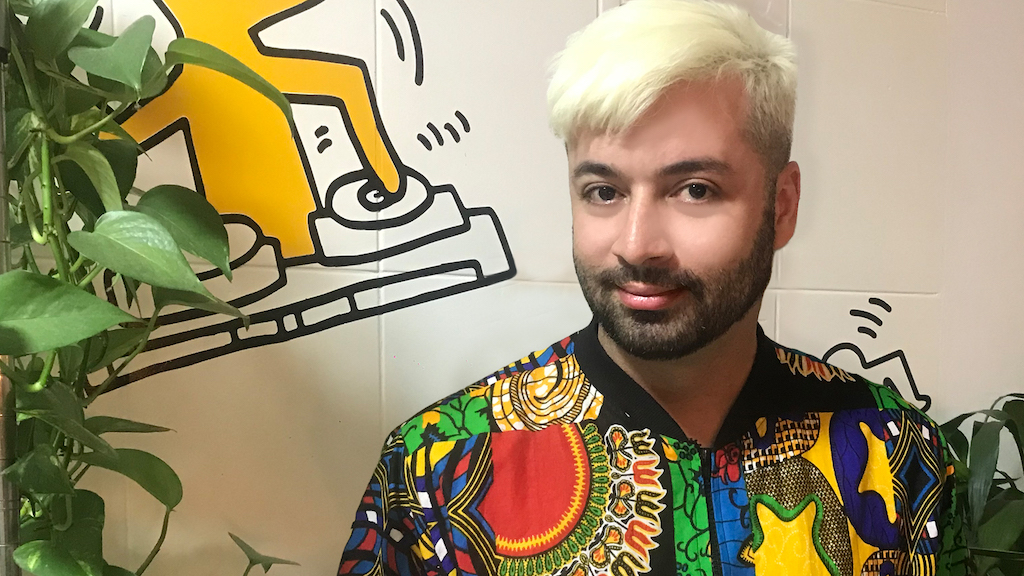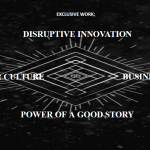Tito Ribeiro, strategical content, networks, and digital transformation specialist made a list of the seven market trends for 2023. Tito has kept up with the digital transformation of several companies in Latin America and Europe. Because of the coronavirus pandemic he had his contract terminated, and he ended up creating PROJECT RENAISSANCE in his spare time: a free-of-charge consultancy to help small companies in the process of digital transformation.
In 2015, Tito started his international career. In this period abroad, he followed the digital transformation process of several companies of various segments. Before returning to Brazil, he worked as innovation director at Biederman McCann in Paraguay.
He also worked as digital director of WPP Group companies, including Y&R in Peru, and as a teacher at the Miami Ad School.
While in Europe, he worked for the Hispanic and global market by developing projects in Istanbul, Lisbon, Madrid, Amsterdam, and London, among other cities. Then he returned to Latin America – first in Montevideo, Uruguay, working on projects for all Latin America and the Caribbean; then in Mexico City, Mexico, and finally in Asunción, Paraguay.
His portfolio includes projects created for brands like McDonald’s, Carrefour, Coca-Cola, AB InBev (Anheuser-Busch InBev), and Diesel.
The 2022 wasn’t an easy year for anybody. We just have been through a pandemic, in which many companies were forced to go through a very intense digital transformation process. While this happened, we also saw Russia rapidly invade Ukraine, inflation increasing, and purchasing power decrease around the world.
With high inflation, operating costs rise, and a possible recession is close. Marketing may not be a priority anymore because of this. Considering this current perspective, it’s necessary to rethink investments in publicity.
According to global institutes like Insider Intelligence (formerly known as eMarketer), investments in digital media should be the most affected with an impact of US$16,21 billion. This strengthens the need to build more creative and original content.
Subjects like things internet, metaverse, blockchain, and Web 3.0 became popular and expanded themselves. The bet for 2023 is the creation of communities and the fortification of Web 3.0 expansion.
1) Market needs new leaderships and views
As a global megatrend, generation Z is the leader of purchase chain in several segments today. This allows big companies to rethink their marketing strategical structure to improve their results.
However, decisions are still being taken very slowly, without this generation’s fluidity.
Another point that big CEOs must pay attention to is the fact that this generation is entering labor market, so these people need to be heard. New methodologies need to be installed. It’s important to understand the need for younger leaders to facilitate dialogue with this generation.
2) Digital influencers consolidate themselves as a business platform
Many companies are already ahead with the development of strategic partnerships with influencers through the so-called DNVB (Digitally Native Vertical Brand), that is, digitally native brands whose business structure is vertical. Marketing of influence rose significantly in all countries this year.
Narratives are deeper, being built by teams that are more and more structured. Agencies realized that a project with influencers isn’t a job for an intern. Today, storytelling of action with influencers has proved to be capable of creating engagement and increasing sales.
Considering only values accounted for in the United States by an Influencer Marketing Hub’s research brands invested $4.14 billion in this market. This amount should rise in 2023; forecasts indicate the amount invested will reach $4.62 billion.
Now, the next step is making this market more and more professional for it to be not only a tool to build a brand but also an entry source of economic resources for companies by building projects and products.
3) Brand Entertainment interconnected with sales strategies
Social networks like TikTok, YouTube, and WhatsApp are investing in tools focused on digital commerce and this can radically transform platforms. Very popular in China, purchases through social networks – the so-called social commerce – are expanding. Globally, this market should be $1.29 trillion in 2023, which represents 20% of global sales of electronic commerce.
So, we need to change the structure that creates digital content fast, taking the entertainment to sales’ dynamic journeys, compatible with what consumers look for when they use social networks while also respecting content and format to not create double content. Each social platform requires a different language.
4) Will it be the year of the metaverse?
No, definitely not. Augmented reality (AR) technology and virtual reality (VR) will keep advancing, but we are far away from really inserting it into our daily lives.
Many companies are already developing metaverse platforms. Many of them are being created to conduct training and integration. This trend will accelerate in 2023. For now, the marketing segment has been investing a lot in the games’ community. This will grow in the next months.
Another subject that deserves attention in the next year is a greater investment in avatars for AI that can act as companies’ representatives in the metaverse.
Specialists predict that the metaverse will add $5 trillion to the global economy by 2030. 2023 is the year that will define the direction of the metaverse for the next decade.
5) Cybersecurity, quantum progress, and Web 3.0
This trend has to be carefully observed while countries like United States, Germany, United Kingdom, India, China, and Russia invest a lot in the development of quantum computerization technology. This creates a global race to develop computerization on large scale.
The alert is that this computerization may not use our current cryptography practices, thus, any nation that develops quantum computerization on a scale can break the cryptography of companies, security systems, and other nations.
When we talk about Web 3.0, NFTs will become more usable and practical, making it possible to create campaigns and marketing activations aimed at forming communities around a brand. For example, NFTs tickets for concerts will potentially make new experiences possible and will give more access to exclusive advantages.
NFTs can be the key to retaining consumers and potentialize the investment in digital, providing new sources for billing. The rise of Web 3.0 and its developments are already in advertisers’ sight. According to a report from IAB (Interactive Advertising Bureau) with data from Statista, the expectation is that this market’s revenue reach $47.48 billion by the end of this year and $678.7 billion by 2030.
6) AI in all places and the evolution of data use
Artificial Intelligence (AI) will become reality in organizations in 2023. For this, data use is indispensable. Evolution of the use of business intelligence is also a trend for media in 2023. Even though Google delayed the ending of the use of third-party cookie to the second half of 2024, giving more time to companies to prepare, they won’t waste this time. Now marketers should try segmentation systems based on proxy and contextual advertising.
Many companies use AI-enabled algorithms with advanced data reading to recommend products to their clients corresponding to their sizes and preferences.
7) Real inclusion – diversity, more and more diversity
Have you noticed how ads are visually changing? That’s a great advance in gender and race diversity. There isn’t only a beauty pattern to brands anymore. Now the challenge is to develop a structure that’s not only about creating desire but about inclusion. This will allow people so far excluded like racial groups and LGBTQIA+ people to participate of the circle of consumption.
Unfortunately, today many companies have projects that superficially deal with diversity, in which people can’t build a career plan. It’s necessary to urgently rethink this.
MARKETING Magazine is not responsible for the content of external sites.










